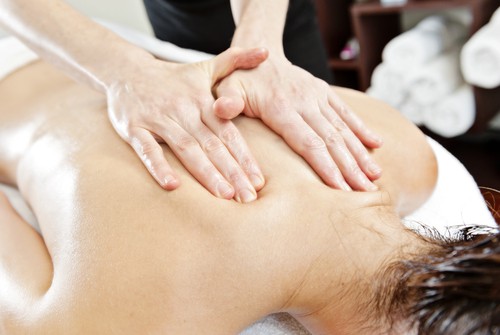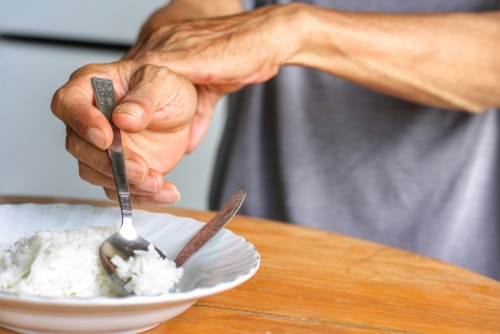
How To Relieve Chronic Pain With Regular Massage Therapy?
March 14, 2023
The Best Massages for Stress Relief
June 27, 2023Difference Between Deep Tissue And Swedish Massage Therapy

Swedish Massage
Difference Between Deep Tissue And Swedish Massage Therapy. When it comes to massage therapy, there are several types to choose from. Two of the most popular forms of massage are Swedish massage therapy and deep tissue massage. While both treatments offer a range of benefits, they differ in terms of technique, pressure level applied, and intended outcomes.
In this article, we’ll explore the differences between deep tissue massage and Swedish massage therapy so you can decide which is suitable for your needs.
Understanding Swedish Massage Therapy

Swedish massage therapy is the most common type of massage. It uses long strokes, kneading movements, and circular pressure on muscles performed in a rhythmic motion with light to moderate pressure applied by a therapist’s hands or elbows.
This technology helps promote relaxation by increasing blood flow throughout your body while reducing stress hormones such as cortisol levels.
Swedish massages use lighter strokes with techniques such as kneading motions and vibration movements on softer parts such as skin surface layer tissues around bones over different targeted areas throughout your body – including necks, shoulders, back, feet, legs, arms, hands, and even faces!
Unlike deep-tissue massages where firmer pressures get used throughout sessions focusing primarily around trigger points within muscles themselves rather than relaxing overall muscles more gently, stretching them outwards across targeted regions instead creates a general sense of calmness and relaxation, thus relieving any tensions found therein too!
Some benefits include the following:
- 1) Improved circulation
- 2) Reductions in muscle tension
- 3) Increased flexibility
It’s great if you want to alleviate stress or relax after a long day at work.
Understanding Deep Tissue Massage:

Deep tissue massages use more intense pressure than its counterpart Swedish technique; The therapist applies firm pressure on tight areas bringing relief from muscle knots (also known as adhesions), chronic pain issues caused by injuries, or overuse syndrome.
The process involves working through multiple layers of tissues, including fascia connective tissues located underneath skin surfaces, without causing too much discomfort during treatment sessions.
Deep tissue massages involve applying firm pressure using slow strokes on specific areas where tension has built up in your muscles or connective tissues near joints. This treatment focuses on releasing knots developed due to stress or injury by targeting deeper layers rather than just superficial ones.
Deep tissue massages may sometimes be uncomfortable as therapists work through tough knots, but they can ultimately lead to significant pain relief. Additionally, this treatment may help improve mobility while reducing chronic muscle pain caused by conditions like arthritis or fibromyalgia; perfect if you’re looking for long-term solutions!
Benefits include:
- 1) Relief from chronic pain conditions like arthritis,
- 2) Rehabilitates injured muscles
If you think about the deep tissue option, please be sure that extra care is needed since it can cause soreness after the treatment session. It may not suit everyone due to varying individual thresholds; hence, consultation with a licensed professional prior would ensure suitability based on health status.
Differences Between Both Techniques

Despite having some similarities, both techniques differ in many ways.
1) Pressure intensity:
The most notable difference between the two massage techniques is pressure. Swedish massages use light to moderate force applied by a therapist’s hands or elbows, while deep tissue massages require more intense pressure targeting deeper muscle layers.
2). Purpose of Treatment:
Swedish technique is primarily used for relaxation and stress reduction, while deep tissue massage addresses chronic pain issues and releases tightness in muscles.
3) Technique Application:
Swedish therapy uses long rhythmic strokes and kneading movements with circular motions against skin surfaces, whereas Deep Tissue Massage applies direct, focused firm pressure on specific areas that need attention.
Which One Is Right For You?

You are choosing which type of therapy depends on your personal needs. Swedish Massage Therapy might be perfect for you if you want to relax after a stressful day at work or relieve tension in your muscles without too much discomfort during treatment sessions.
However, if looking into addressing chronic pains from injuries or overuse syndrome adhesions caused by knots forming within muscle tissues, then Deep Tissue Massage may provide better results, although it can cause soreness following the session.
We recommend that you consult with licensed professionals best they can help guide decision-making based on individual health status and discuss any concerns before starting either type of treatment plan.
Difference Between Deep Tissue And Swedish Massage Therapy – Final Thoughts

Whether you choose deep tissue massages or prefer lighter Swedish techniques instead based on personal views towards these treatments, therapeutic effects will vary from person to person depending on each unique situation, needs, preferences, goals, expectancies desired outcomes. With this said, both bodywork forms offer tremendous benefits that can help improve quality of life! So why not try them out today and see how they make you feel – after all, what’s their loss?
Are you looking for professional and reliable home massage services in Singapore? Chat with us today!



